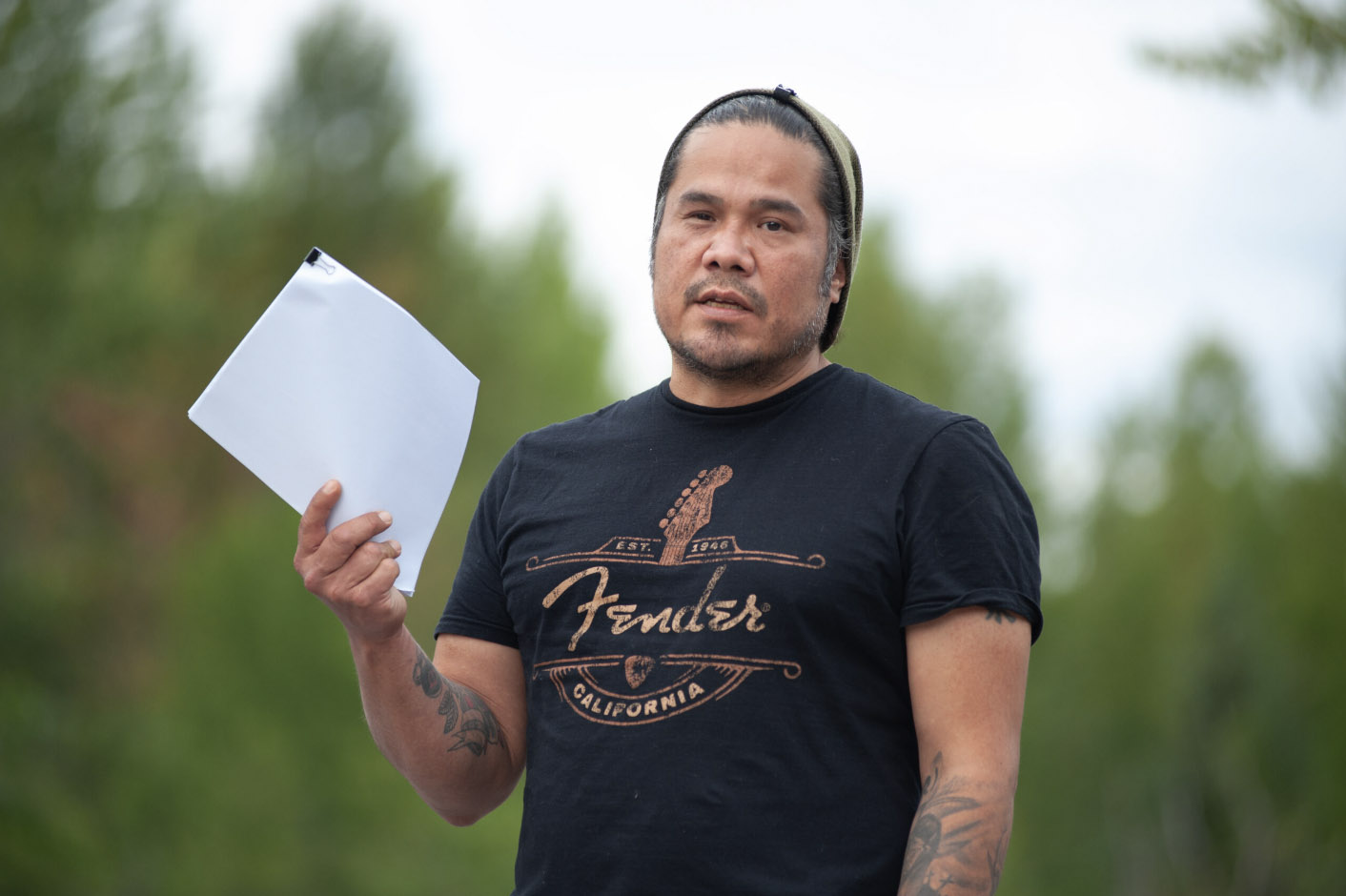Hundreds of kilometres apart, pipeline resistance and Site C dam flooding bring to mind the province’s new LNG industry — amid B.C.’s shifting election landscape
Last Thursday, reporter Matt Simmons spotted a series of social media posts that caught his attention.
Indigenous leaders and community members were gathering on a remote road in northwest B.C., with some important legal paperwork — and pocket lighters.
Matt, who lives in Smithers, B.C., grabbed his camera gear and drove for two hours. He arrived just in time to witness Gitanyow Hereditary Chiefs burn an agreement they had signed 10 years earlier in support of the Prince Rupert Gas Transmission Line (PRGT) — a pipeline that, if completed, will stretch 800 kilometres, from Treaty 8 territories in B.C.’s northeast to the mouth of the Nass River on the Pacific coast.
“As far as we’re concerned, this pipeline needs a new environmental assessment,” Gamlakyeltxw Wil Marsden said as he lit the agreement on fire. “We just want to make our ancestors happy.”
Three days later, on the other side of the province, farmers Ken and Arlene Boon watched as the Site C dam flood waters began to rise in the Peace River Valley.
“It’s going to be pretty dramatic — and traumatic,” Ken Boon told me, after I got BC Hydro’s construction update email. The Boons’ story, along with stories from many other people who are now watching the destruction of an ecologically and culturally important Canadian valley, had led me to write a book on the Site C saga back in 2018.
“It’s one of those sad, surreal moments that you wish never would happen, but inevitably, it’s happening,” West Moberly First Nations Chief Roland Willson told me of the Site C dam reservoir filling, set to flood 128 kilometres of the Peace Valley and its tributaries, destroying Indigenous hunting, trapping and fishing grounds and cultural sites — among many other significant and irreversible impacts.
Hundreds of kilometres apart, the two events are inextricably linked.
The publicly funded Site C — its price tag has risen to $16 billion, making it the costliest hydro dam in Canadian history — will help provide energy for B.C.’s new liquefied natural gas (LNG) industry. One of those LNG facilities, Ksi Lisims, will get its gas from the Prince Rupert Gas Transmission pipeline.
“The tensions around this have been building for so long … now, they’re finally here,” Matt added, reflecting on years of covering communities intertwined with the push to build fossil fuel infrastructure.
Both projects — the dam and the pipeline — will have significant impacts on the land, wildlife and many Indigenous communities.
The kicker to this news-heavy August? B.C.’s political landscape is set to shift dramatically: the leader of the floundering BC United Party just suspended his campaign and endorsed the BC Conservatives in the provincial election this fall. (Both parties have pledged enhanced support for resource extraction projects — from LNG exports to industrial logging — and we’re keeping track of it all here.)
Read the original newsletter by Sarah Cox at The Narwhal.
